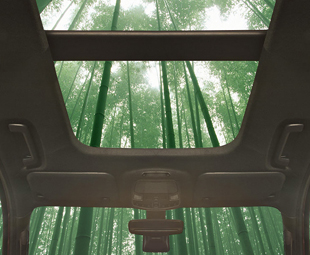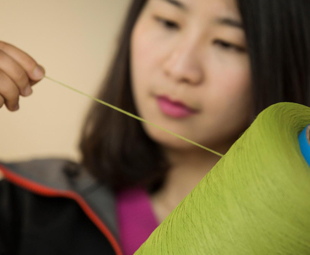Bamboo, the next big automotive material

Did you know that bamboo is one of the world’s strongest natural materials and grows as much as one metre in a day, making it sustainable, too? Soon, some surfaces inside vehicles could be made from a combination of bamboo and plastic.
“Bamboo is strong, flexible, totally renewable and plentiful in China and many other parts of Asia,” says Janet Yin, a materials engineering supervisor at Ford’s Nanjing Research and Engineering Centre.
Over the past few years, Ford has worked with suppliers to evaluate the viability of using bamboo in vehicle interiors and to make extra-strong parts by combining it with plastic.
The team found that bamboo performs better than other synthetic and natural fibres in a range of tensile and impact strength tests. It’s also been heated to more than 100°C to ensure it can maintain its integrity.

Ford is not stopping at bamboo, however. The company is already making use of sustainable and recycled materials and is working with tequila producer, Jose Cuervo, to explore the use of a by-product of the agave plant to develop more sustainable bioplastics for use in Ford vehicles.
Some sustainable materials already found in Ford vehicles include:
• Repreve fabric, made from recycled plastic bottles, which annually diverts more than five million plastic bottles from landfills. Ford recently introduced Repreve in the F-150 pickup.
• EcoLon post-consumer nylon carpeting is used as cylinder head covers in the Ford Escape, Fusion, Mustang and F-150 pickup.
• Recycled plastic bottles are becoming floor carpeting, wheel liners and shields in several vehicles including the Ford Transit van.
• Rice hulls are used to reinforce plastic in the Ford F-150 electrical harness.
Published by
Focus on Transport
focusmagsa





 FUSO: Driving the Future of Mobile Healthc
FUSO: Driving the Future of Mobile Healthc



 New Electric Van Range Unveiled!
New Electric Van Range Unveiled!  A brand
A brand




 Wondering about the maximum legal load for a
Wondering about the maximum legal load for a 
 The MAN hTGX powered by a hydrogen combus
The MAN hTGX powered by a hydrogen combus


 Exciting News for South African Operators
Exciting News for South African Operators






